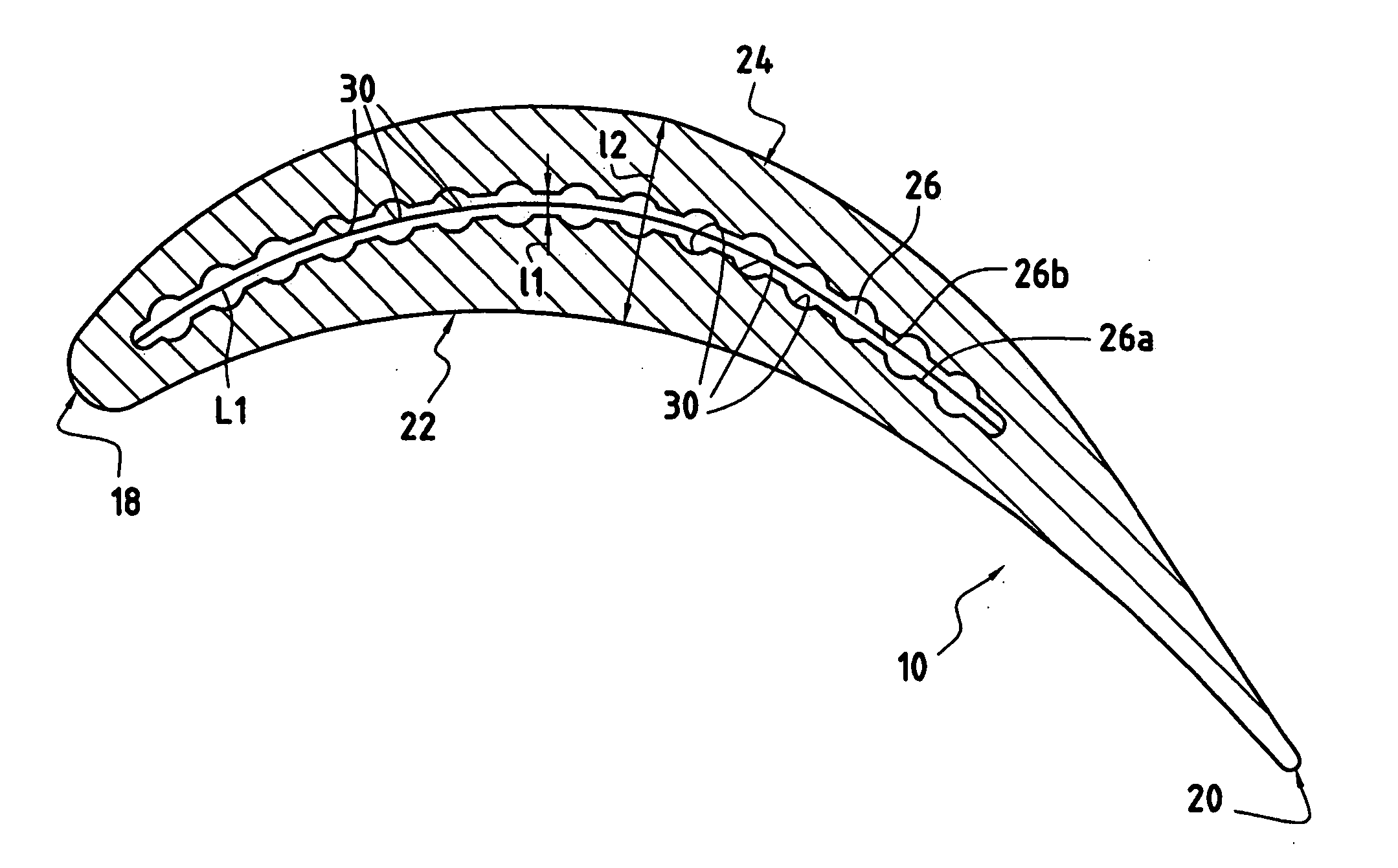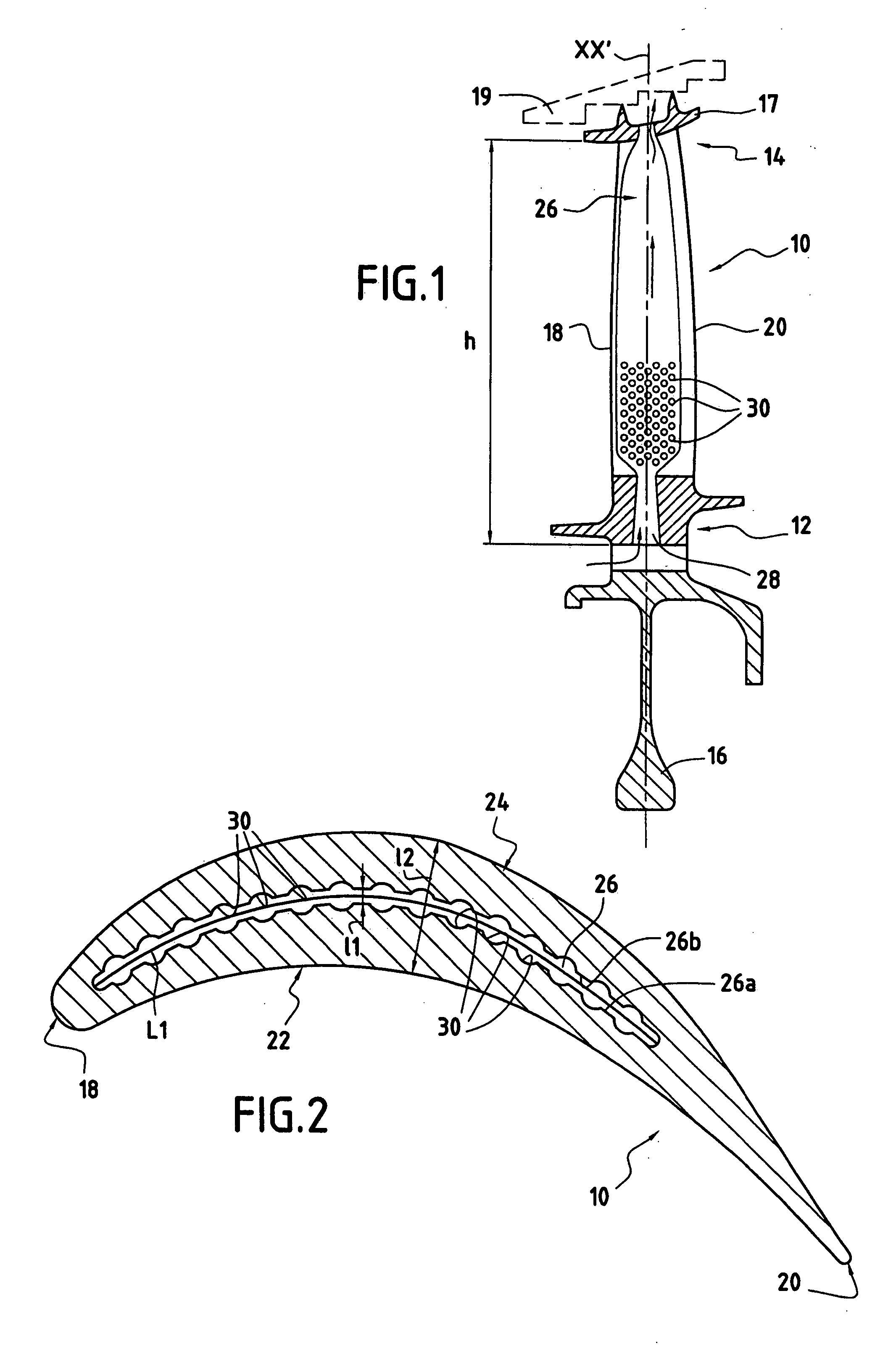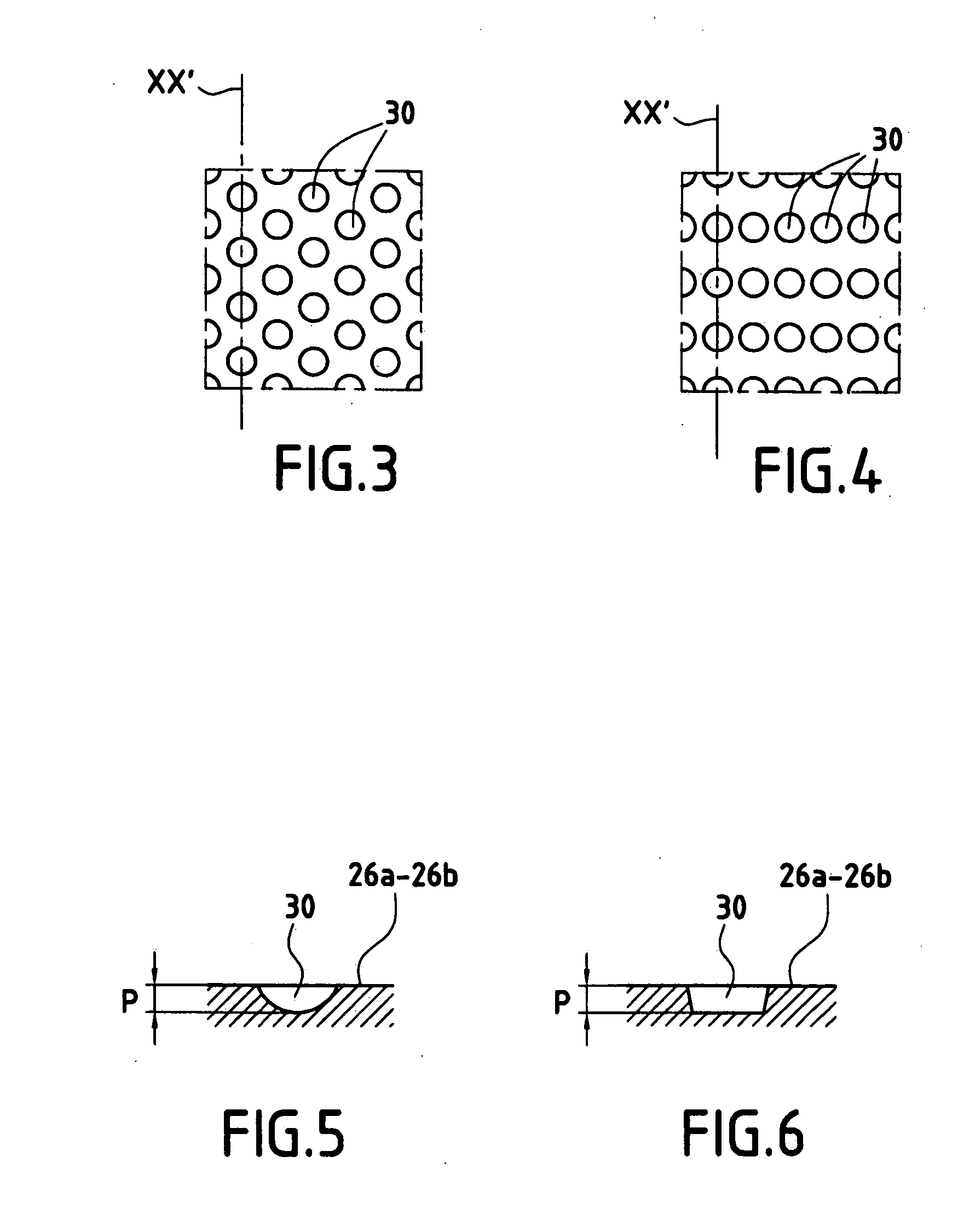Gas turbine blade cooling circuit having a cavity with a high aspect ratio
a cooling circuit and turbine blade technology, applied in the field of turbine blade cooling circuits, can solve the problems of limiting the life of the blade, the cooling circuit is unsuitable for the blade that is “long, and the air flow rate is small, so as to achieve effective cooling, reduce the drawbacks, and facilitate fabrication
- Summary
- Abstract
- Description
- Claims
- Application Information
AI Technical Summary
Benefits of technology
Problems solved by technology
Method used
Image
Examples
Embodiment Construction
[0022] The blade 10 having a radial axis XX′ and shown in FIGS. 1 and 2 is a moving blade of a high pressure turbine in a turbomachine. Naturally, the invention can also be applied to other blades in the turbomachine, for example to the blades of its low pressure turbine.
[0023] The blade 10 comprises an airfoil surface (or blade proper) which extends radially between a blade root 12 and a blade tip 14. The blade root 12 is for mounting on a disk 16 of the rotor of the high pressure turbine. As shown in FIG. 1, the blade tip 14 may have sealing wipers 17 disposed facing an abradable covering 19 fitted to the casing (not shown) of the high pressure turbine.
[0024] The airfoil surface presents four distinct zones: a leading edge 18 disposed facing the flow of hot gas coming from the combustion chamber of the turbomachine; a trailing edge 20 remote from the leading edge 18; a pressure side face 22; and a suction side face 24, these side faces 22 and 24 interconnecting the leading edge ...
PUM
 Login to View More
Login to View More Abstract
Description
Claims
Application Information
 Login to View More
Login to View More - R&D
- Intellectual Property
- Life Sciences
- Materials
- Tech Scout
- Unparalleled Data Quality
- Higher Quality Content
- 60% Fewer Hallucinations
Browse by: Latest US Patents, China's latest patents, Technical Efficacy Thesaurus, Application Domain, Technology Topic, Popular Technical Reports.
© 2025 PatSnap. All rights reserved.Legal|Privacy policy|Modern Slavery Act Transparency Statement|Sitemap|About US| Contact US: help@patsnap.com



